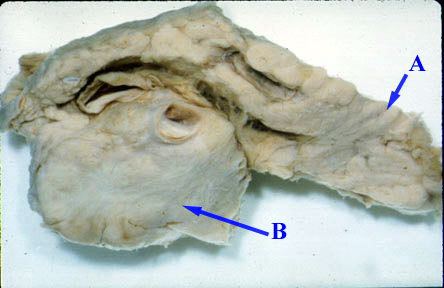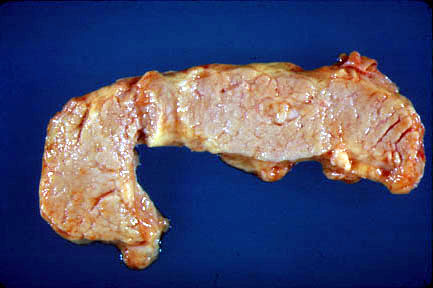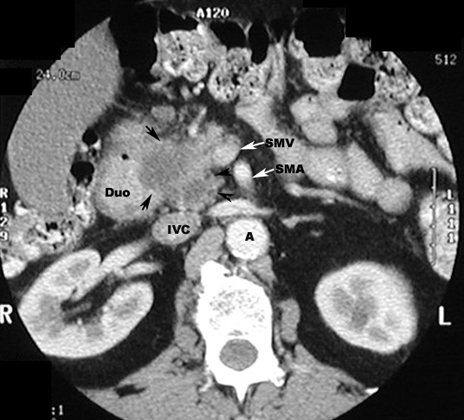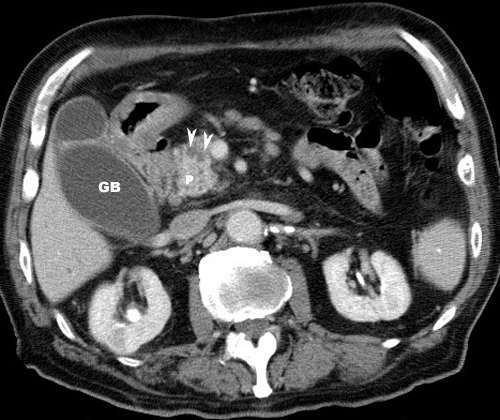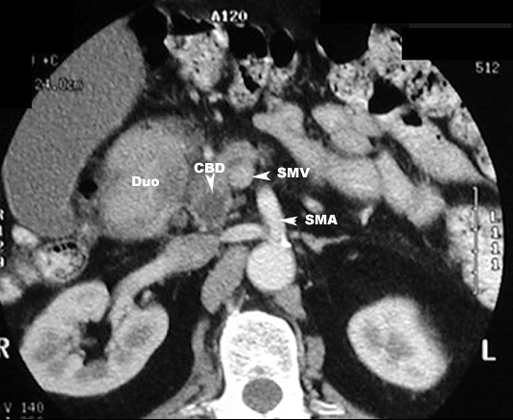Pancreatic cancer
Pathology
- The neoplasm and extensive fibrosis replaces most of the normal pancreas.
- Tumor can be located anywhere in pancreas.
- The neoplasm, in the head of the pancreas, can compress the common bile duct causing an extra hepatic obstruction.
- Dilatation of intrahepatic bile ducts, common bile ducts (CBD) and gallbladder (Courvoisier GB).
- Cancer in the tail of pancreas may obstruct the splenic vein or cause a mass effect on adjacent structures.
- The neoplasm, in the head of the pancreas, can compress the common bile duct causing an extra hepatic obstruction.
- Normal pancreas for comparison.
